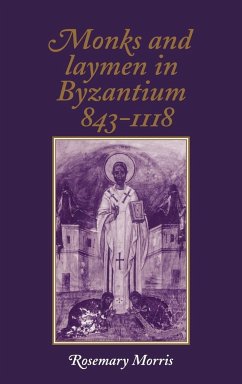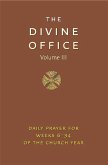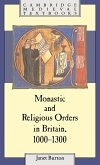In Byzantium monks did not form a separate caste, apart from society. They were not only loyal to their own houses or monastic leaders, but also formed part of a nexus of social, economic and spiritual relationships which bound together the 'powerful' in the middle Byzantine state. Their monasticism, unlike the Western religious 'orders', displayed a highly individualistic streak. Using hagiography, chronicles and, in particular, the archives of the Athonite monasteries, this book reassesses the role of monks in Byzantine society and examines the reasons for the flowering of the monastic life in the period from the end of iconoclasm to the beginning of the twelfth century. The first study of its kind in English, it is aimed at anyone interested in either the Western or the Byzantine early medieval religious life.
Table of contents:
List of maps and tables; Acknowledgments; Note on transliteration and citation; List of abbreviations; Introduction; Part I. Founders and Benefactors: 1. The resurgence of the monastic life; 2. Groups, communities and solitaries; 3. Monastic founders; 4. Monasticism and society; 5. Piety, patronage and politics; Part II. Protection and Survival: 6. Monasteries and the law; 7. Fortune and misfortune; 8. Territorial expansion and spiritual compromise; 9. The challenge to central authority; 10. The Komnene reaction; Appendix: imperial privileges to monasteries, c. 900-1118; Bibliography; Index.
Using hagiography, chronicles and, in particular, the archives of the Athonite monasteries, this book reassesses the role of monks in Byzantine society and examines the reasons for the flowering of the monastic life in the period from the end of iconoclasm to the beginning of the twelfth century.
This book reassesses the role of monks in Byzantine society.
Table of contents:
List of maps and tables; Acknowledgments; Note on transliteration and citation; List of abbreviations; Introduction; Part I. Founders and Benefactors: 1. The resurgence of the monastic life; 2. Groups, communities and solitaries; 3. Monastic founders; 4. Monasticism and society; 5. Piety, patronage and politics; Part II. Protection and Survival: 6. Monasteries and the law; 7. Fortune and misfortune; 8. Territorial expansion and spiritual compromise; 9. The challenge to central authority; 10. The Komnene reaction; Appendix: imperial privileges to monasteries, c. 900-1118; Bibliography; Index.
Using hagiography, chronicles and, in particular, the archives of the Athonite monasteries, this book reassesses the role of monks in Byzantine society and examines the reasons for the flowering of the monastic life in the period from the end of iconoclasm to the beginning of the twelfth century.
This book reassesses the role of monks in Byzantine society.








